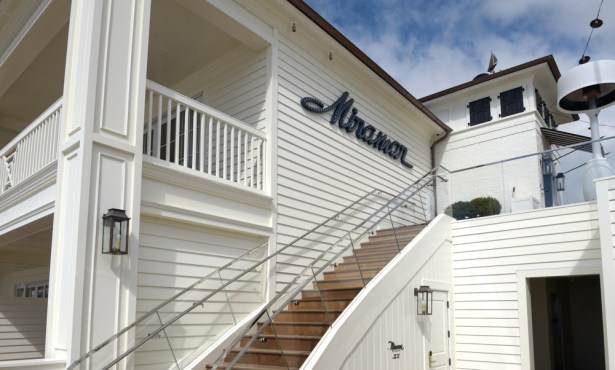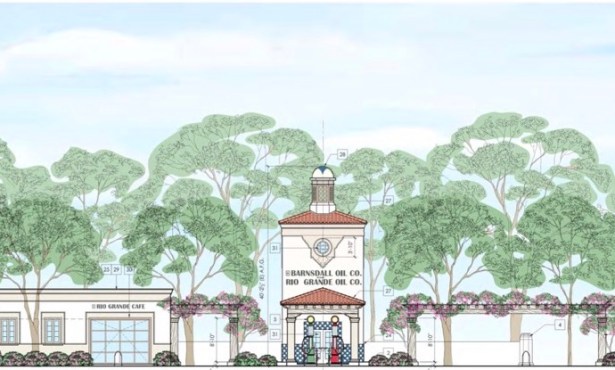Two Steps Forward for Controversial Naples Plan
Naples Development Takes Major Turn Toward Fruition

Though there was no official vote marking its passing, the decades-old debate over the fate of Naples underwent its most major development in recent memory this week. The Santa Barbara County Planning Commission moved the approval process forward with two key decisions on the controversial proposal to place more than 70 luxury homes at the eastern gateway to the Gaviota Coast. When the smoke cleared on Thursday afternoon, July 10, after yet another grueling eight-hour dissection of all things Naples, the Planning Commission, much to the displeasure of the majority in attendance, ruled that the recently completed Final Draft Environmental Impact Report (EIR) — a beast of a document that has been worked on in various forms for more than two years now and was released less than three weeks ago was sufficient. The commission moreover took a major step in deciding what exactly the final Naples project will look like, subject to a vote by the Board of Supervisors.
Choosing to leave behind other possibilities, such as hopeful Naples conqueror Matt Osgood’s original development proposal for 54 houses on 485 acres or the option of no development at all, the planning commissioners expressed their unanimous support for what is known as “Alternative Prime.” This relatively newly conceived incarnation of Osgood’s plan would spread 72 large-scale homes over some 3,100 acres.
Frustrated with the thumbs up being given to a project that was conceived well after the bulk of the EIR research was already done, Naples Coalition lawyer Marc Chytilo summed up the hearing on Friday by saying, “It is nothing short of stunning that they [the commissioners] are so disinterested in the substantive issues. . . .It was so rushed it just boggles the mind.”
Driving hard and fast toward the goal of getting the project to the Board of Supervisors for approval this fall, the commission held a full-day hearing on the DEIR on June 30 to address perceived shortcomings of the document, specifically discussion about Chumash sites on the property, waste water management, and biological as well as viewshed impacts. After all, the document identifies three unmitigatable, Class I environmental impacts plus several Class II impacts. That discussion continued Thursday, when commissioners heard from John Larson, the Naples EIR consultant. With the bulk of his presentation, which lasted much of the morning, centering around the idea that Alternative Prime would not, in his and county’s staff’s opinion, warrant any substantial new EIR work, the five commissioners appeared satisfied that the issues had been sufficiently vetted. This despite the fact that they had received the raw data of Larson’s presentation less than 36 hours prior. As 2nd District Commissioner Cecilia Brown said, in expressing support for the document as is, despite the fact that she, like much of the commission, admitted to not having read every word of it, “This EIR will never be perfect : but that’s OK. The evolution of this has been one of great improvement. I feel comfortable with the document.” The 1st District’s Mike Cooney, after explaining that in the beginning he “had [his] doubts” about the EIR, said that he felt good about it thanks to the repeated question and answer sessions with Larson. “It’s not completeness and it’s not perfection [that we are looking for],” said Cooney. “It’s adequacy and, to me, it is adequate.” Of approximately 20 public commenters on the subject, not one agreed with the commissioners.
After arriving at its conclusion that the EIR was adequate, the commission heard brief testimony from county planner Tom Figg on various policy issues associated with the Naples plan that need to ruled on before it can move forward. To that end, said Figg, the commissioners would first have to decide among the project options: the original memorandum-of-understanding project, the Alternative 1 project that incorporates the neighboring Dos Pueblos Ranch, the Alternative 1B project (a.k.a. Alternative Prime) which is essentially the same as Alternative 1 but moves 14 house sites on the north side of Highway 101 further out of the viewshed, Alternative 2 designed by the Naples Coalition that calls for no houses on the coastal terrace and employs cluster housing design, and finally the No Project option. According to Figg, any substantive discussion of things like coastal access, re-zones and land-use policy consistency would not be possible until his staff knew which project to apply them to. After a quick round of additional discussion, the commissioners all pointed to Alternative Prime, which calls for 2,600 acres of permanently preserved open space in addition to its 72 houses and equestrian center, as the most desirable avenue of exploration. Though some felt more strongly than others, the general consensus was, as Commissioner Blough put it, “1B is environmentally superior to anything that has been presented.”
C.J. Jackson, who presides over the commission and is the representative for the 3rd District, where Naples resides, conceded that this week’s decisions were “counterintuitive” because “it suggests that more building on the coast could somehow be superior to less.”
Next up is a July 21 meeting where commissioners intend to tackle the major policy issues related to Alternative Prime. If all goes according to plan, they hope to have yet another hearing on August 13 to finalize their findings and officially pass them along to the Board of Supervisors.



